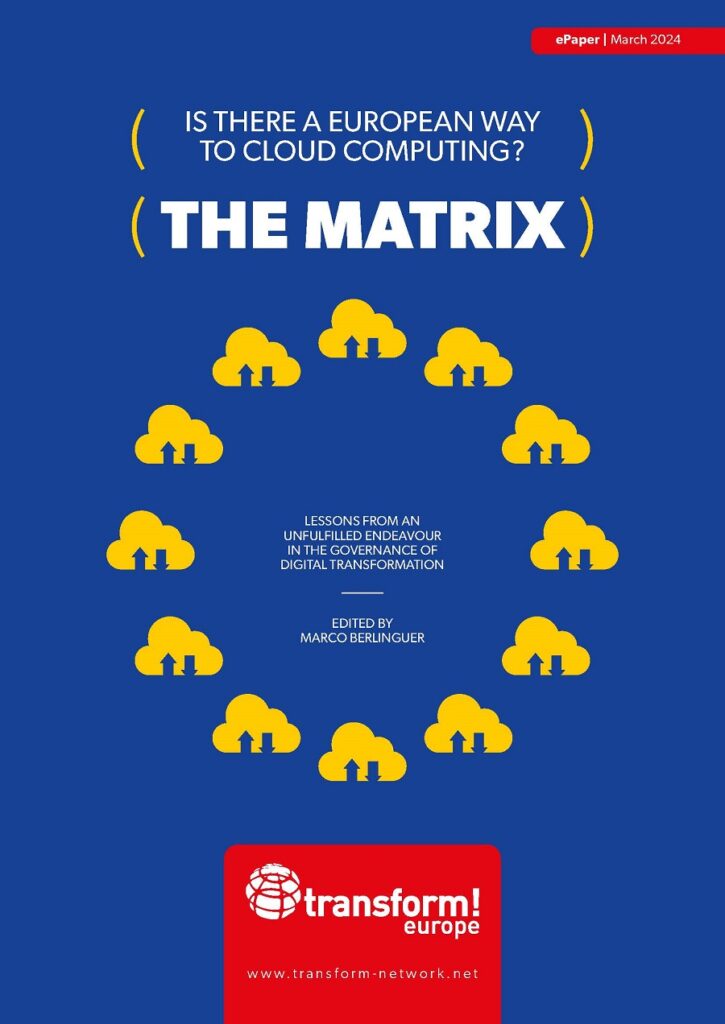The European Union has set itself the goal of achieving its own “digital sovereignty”. This is but one of several reasons why it is particularly interesting to study the ongoing attempt by European governments and the EU to regain an active role in the digital revolution and develop a new type of industrial policy. The EU indeed seeks to intervene through political decisions on technological development itself. Specifically, the underlying matrix of set principles (inter-operability, open source, standardisation, modularity) will likely have systemic implications on organisational forms and governance models.
But these reasons also have to do with the context in which the European initiative is taking shape.
Indeed, a number of new infrastructure technologies are currently being designed and rolled out. Cloud computing, the Internet of Things, 5G, and Artificial Intelligence constitute the core of these new technological systems. Collectively, they represent the advent of a new stage of the digital revolution, which is destined to have a radical impact on all activities, economic sectors, organisations and political institutions themselves.
Added to this is a clear return of public intervention in the governance of technological and economic development. This is the result of the importance of these new infrastructure technologies, the explosion of geopolitical competition between the US and China over the control of these new technological frontiers, and the crisis of neoliberal globalisation.
There is one last reason why this subject deserves particular attention. In this new phase of the digital revolution, new forms of governance will be tested and established to address the multiple challenges of this same technological, economic and political transition.
To understand the nature of this transition and the characteristics and limitations of the European initiative, this essay analyses European policies in the field of cloud computing. Cloud computing is the most mature of these technologies and its deployment is already on the agenda of all major governments. It is also a paradigmatic infrastructure, in the sense that it incorporates multiple characteristics exemplary of this phase of transition in digital transformation and of the main technologies that are promoting it.
It represents the shift to an infrastructure-like use and consumption of digital and computational technologies. It is an enabling infrastructure for the transition to a society based on the intensive exploitation of data and computational capabilities. It is an infrastructure whose introduction destabilises and reconfigures the modes of operation and even the boundaries of economic sectors, organisations, and institutions. Finally, it is an infrastructure that is extremely complex, in its components and architecture, and subject to constant dynamism. All these characteristics make it emblematic and, likewise, impart a push towards the introduction of new forms of governance.
The Matrix: Is There A European Way To Cloud Computing?
Edited by Marco Berlinguer.
Cover & Layout: Vittorio Giannitelli.
March 2024. 69 pages.
Please find the ePaper on the right/below (mobile version) in ‘Documents’ (English, PDF).
Table of Contents
Executive Summary
Introduction: What governance for digital transformation?
Cloud computing: An infrastructure for a data-driven society
Is there a European way to cloud computing?
> The shift in the European approach to digital policy
> A multiplicity of initiatives in cloud computing
> The key test: public administration cloud migration
A matrix for rethinking public governance
Conclusion: Struggling for an innovative governance system
Bibliography & Notes
